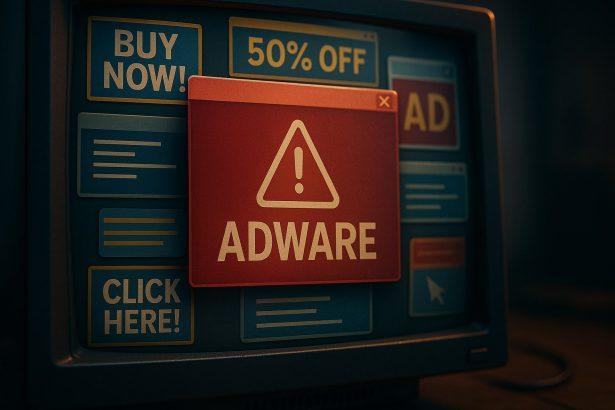A spike in complaints marks Tracktransit.co.in as the latest in a long line of deceptive push-notification scams. Picture this: An ordinary user, just trying to watch a video or download a file, suddenly encounters a website demanding a security check. The prompt appears legitimate—“Click Allow to confirm you’re not a robot.” With one careless click, their browser starts displaying relentless pop-ups advertising adult sites, software updates, or outright scams, even when the browser isn’t in active use. Cases like these are escalating, with attackers relying not on malware, but on manipulation and user confusion.
Threat Overview
Tracktransit.co.in exemplifies the rise of notification abuse—a technique exploiting browser permissions to inundate victims with unwanted ads and malicious redirects. Unlike ransomware or spyware, this threat doesn’t infect the operating system directly. Instead, it weaponizes legitimate browser features, targeting anyone using Chrome, Firefox, Edge, or Android’s built-in browser. The endgame? Drive traffic to dubious sites, peddle questionable products, and set the stage for further cyberattacks.
Key Details Table
| Threat type | Source domain | Detection names | Symptoms | Damage | Distribution methods | Severity | Removal tool |
|---|---|---|---|---|---|---|---|
| Push-notification spam | tracktransit.co.in | Not typically flagged | Pop-up ads, redirects, spam notifications | Privacy risk, phishing, unwanted downloads | Malvertising, adware, misleading prompts | Moderate | Malwarebytes, HitmanPro, AdGuard |
In-Depth Analysis
Infection Vector
Tracktransit.co.in notification spam often starts with a visit to streaming portals, cracked software repositories, adult content, or pirated movie sites. These environments are fertile ground for malicious advertising networks. Victims encounter a browser interstitial with messaging like “Click Allow to continue” or “Press Allow to confirm you are not a robot.” The language is intentionally deceptive. Allowing notifications grants the site power to bypass ad-blockers and display pop-ups directly on the user’s desktop or mobile device.
Behavioral Profile
- Victim lands on a compromised or aggressive ad-driven website.
- The site immediately redirects to tracktransit.co.in.
- A fullscreen prompt appears, urging the user to click “Allow.”
- Once clicked, Tracktransit.co.in is granted permission to push notifications at any time.
- The victim begins receiving a flood of notifications—often featuring explicit content, scam offers, tech support hoaxes, or links to dangerous downloads.
- Clicking these notifications can lead to phishing sites, fake software installers, or additional adware infections.
- The spam persists until notification permissions are revoked or the browser profile is reset.
Risk Assessment
While Tracktransit.co.in does not encrypt files or harvest data like classic malware, its persistent notifications erode user trust and create a constant vector for future attacks. Users who engage with these notifications risk exposure to phishing campaigns, malware downloads, and scams. In some instances, notification spam has been the launching pad for credential theft and remote access trojans, especially when notifications imitate banking, software, or system update alerts. The threat is amplified by how easily users can grant permissions—one click is all it takes.
Artifact Text
Since Tracktransit.co.in is not a classic scam or ransomware threat, there is no ransom note or phishing email text to reproduce. Instead, the key artifact is the misleading browser prompt:
vbnetCopyEdittracktransit.co.in wants to Show notifications
Click "Allow" to confirm you're not a robot
Manual Adware Removal Process (Windows & Mac)
Step 1: Identify and Uninstall Suspicious Applications
For Windows Users
- Open Task Manager by pressing
Ctrl + Shift + Esc. - Navigate to the “Processes” tab and search for unknown or high-resource-consuming processes.
- If you detect anything suspicious, right-click and select “End Task.”
- Go to
Control Panel>Programs>Programs and Features. - Locate and uninstall any unfamiliar programs.
For Mac Users
- Open
Finderand click onApplications. - Identify and move any suspicious applications to the
Trash. - Empty the
Trash. - Check
System Preferences>Users & Groups>Login Itemsfor unknown startup programs and remove them.
Step 2: Remove Malicious Browser Extensions
Google Chrome
- Open Chrome, click
Menu(three dots) >Extensions. - Locate and remove unknown extensions.
- Reset Chrome:
Settings>Reset settings> “Restore settings to their original defaults.”
Mozilla Firefox
- Click
Menu>Add-ons and themes. - Remove suspicious extensions.
- Reset Firefox:
Help>More troubleshooting information> “Refresh Firefox.”
Safari (Mac)
- Open Safari, go to
Preferences>Extensions. - Delete unknown extensions.
- Reset Safari:
History> “Clear History.”
Microsoft Edge
- Click
Menu>Extensions. - Remove any unfamiliar extensions.
- Reset Edge:
Settings>Reset settings> “Restore settings to their default values.”
Step 3: Delete Adware-Associated Files and Folders
For Windows Users
- Press
Win + R, type%AppData%, and press Enter. - Locate and delete suspicious folders.
- Repeat for
%LocalAppData%,%ProgramData%, and%Temp%.
For Mac Users
- Open Finder and press
Shift + Command + G, then enter~/Library/Application Support/. - Remove any suspicious folders.
- Repeat for
~/Library/LaunchAgents/,~/Library/LaunchDaemons/, and~/Library/Preferences/.
Step 4: Flush DNS Cache to Remove Adware Traces
For Windows Users
- Open
Command Promptas Administrator. - Type
ipconfig /flushdnsand press Enter.
For Mac Users
- Open
Terminal. - Enter
sudo killall -HUP mDNSResponderand press Enter.
Step 5: Restart Your System
Perform a reboot to apply the changes and ensure the removal process is complete.
Automatic Adware Removal Using SpyHunter (Windows & Mac)
For an effortless and effective solution, use SpyHunter, a powerful anti-malware tool designed to detect and remove adware completely.
Step 1: Download SpyHunter
Click the link to download SpyHunter: Download SpyHunter Here.
Step 2: Install SpyHunter
Follow the installation guide based on your operating system:
For Windows Users
- Run the downloaded
.exefile. - Follow the installation instructions.
- Launch SpyHunter and allow it to update its malware database.
For Mac Users
- Open the downloaded
.dmgfile. - Drag and drop SpyHunter into
Applications. - Open SpyHunter and let it update its database.
Step 3: Scan and Remove Adware
- Open SpyHunter.
- Click
Start Scan. - Wait for the scan to complete.
- Click
Fix Threatsto remove detected malware.
Step 4: Restart Your Computer
After SpyHunter removes all threats, restart your system to ensure all adware components are fully removed.
Conclusion
Tracktransit.co.in relies on tricking users, not hacking systems. The attack is social in nature, manipulating built-in browser features for gain. The solution is both technical and behavioral: revoke permissions, reset browser settings, remove any adware, and remain vigilant for deceptive prompts in the future. Early action prevents notification spam from escalating into more severe security incidents.




